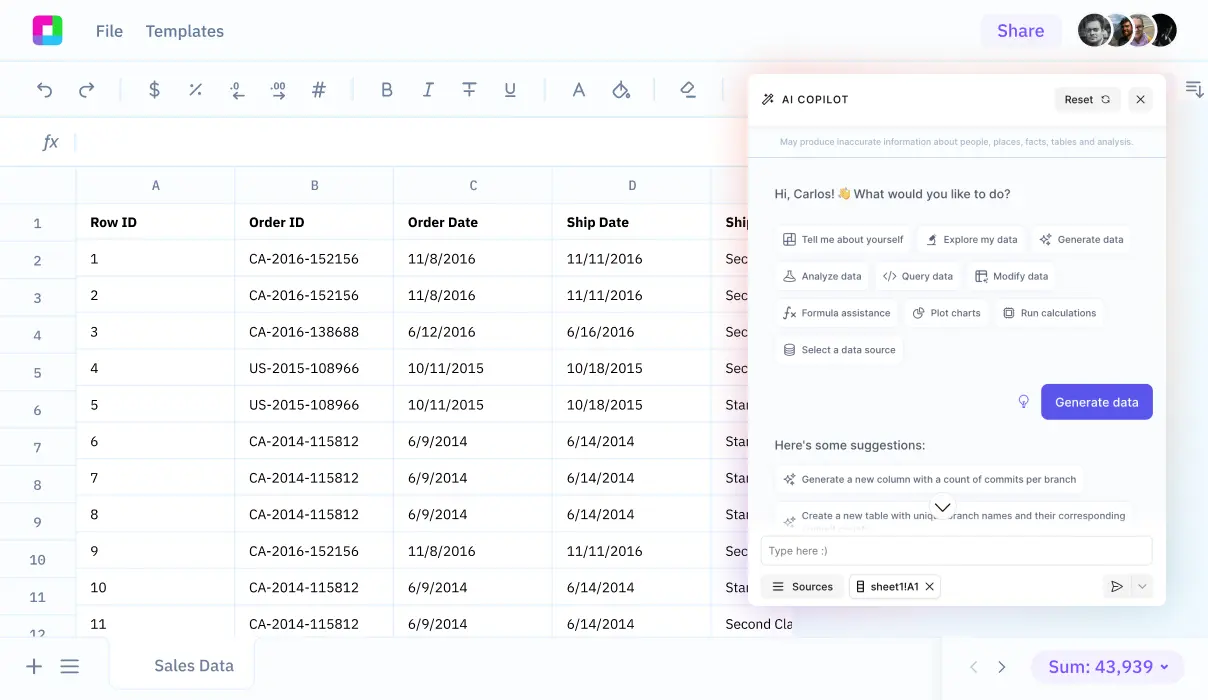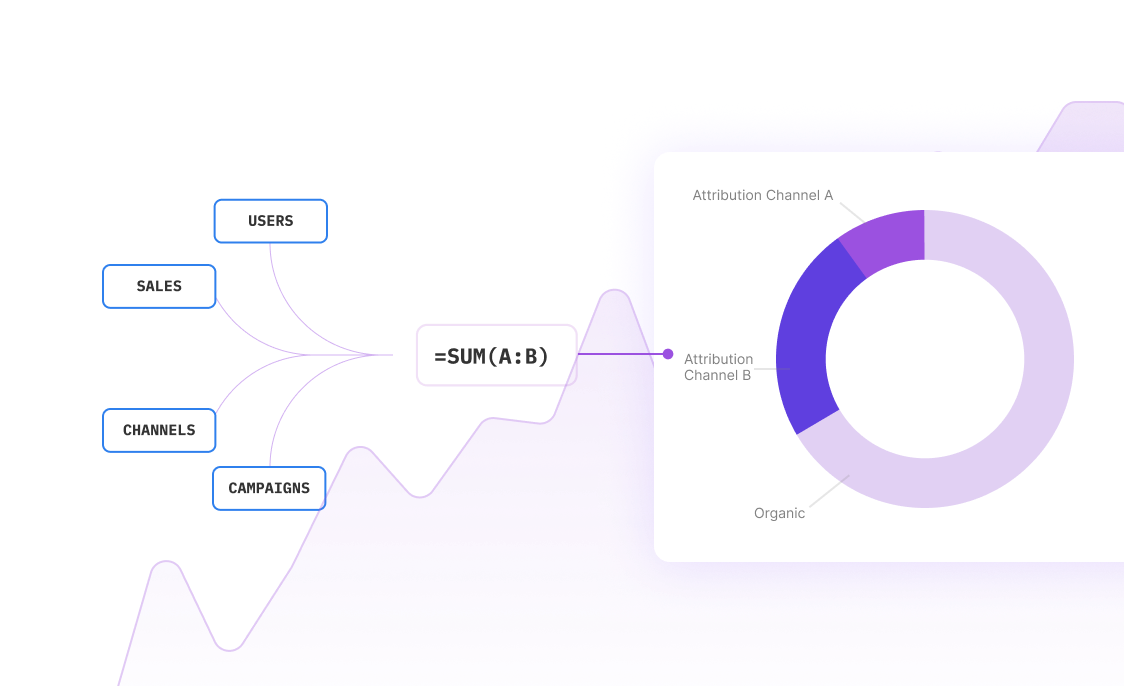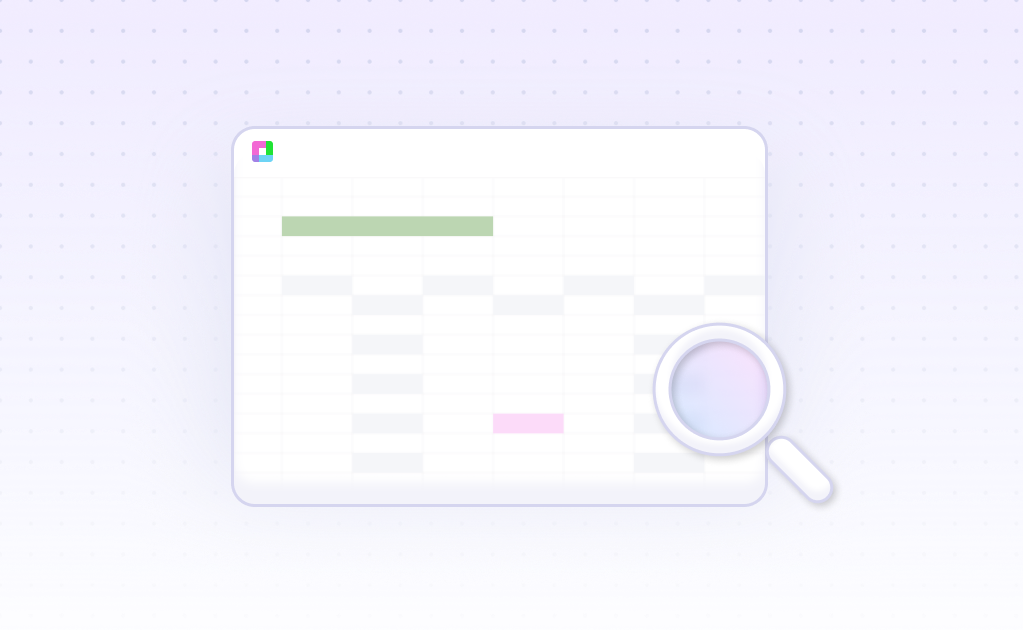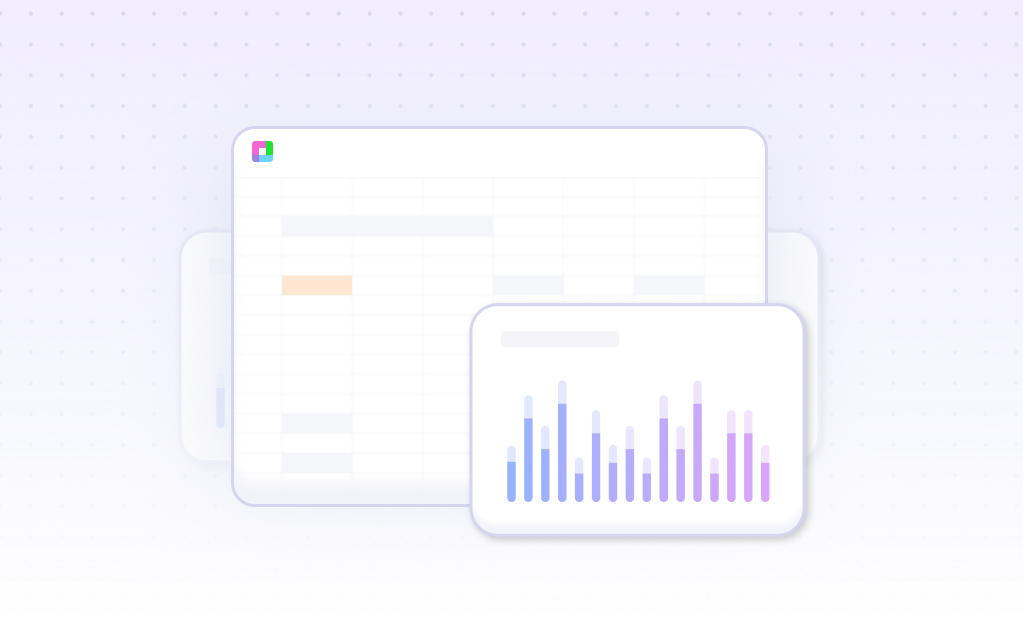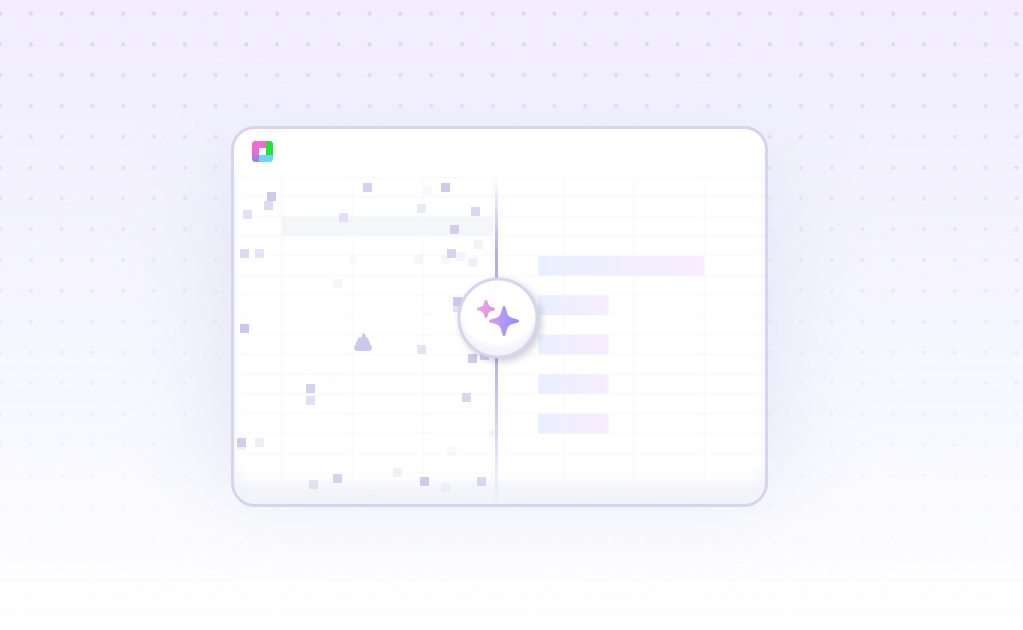
Introduction
Financial leverage ratio analysis helps assess a borrower's credit risk by examining their debt levels relative to assets. The ratio divides average total assets by average shareholders' equity, with lower ratios indicating less debt exposure. While Excel allows manual calculation by combining beginning and ending values, Sourcetable offers an AI-powered alternative that streamlines this process.
Sourcetable enhances financial analysis through automated data synchronization, AI-assisted formula generation, and natural language processing capabilities. The platform performs horizontal, vertical, and ratio analysis while calculating key metrics like burn rate, cash runway, and operating margins. For seamless financial leverage analysis using AI, try Sourcetable today.
Why Sourcetable Is the Best Tool for Financial Leverage Ratio Analysis
Sourcetable combines AI-powered automation with spreadsheet functionality to transform financial ratio analysis. While Excel requires manual calculation and interpretation of leverage ratios, Sourcetable's AI capabilities automatically analyze financial metrics, identify patterns, and provide detailed explanations of variances.
Cost-Effective Solution
Sourcetable offers its powerful AI-driven financial analysis capabilities for free, compared to GPTExcel's monthly fee of $6.99. Both platforms provide similar integrations and support options, making Sourcetable the more economical choice for businesses monitoring their financial ratios.
Enhanced Decision Making
Unlike traditional Excel analysis, Sourcetable's AI engine rapidly processes financial statements to assess company performance, profitability, and risk levels. This automated analysis provides management with critical insights for strategic planning and maintaining business financing.
Automated Efficiency
Sourcetable's natural language processing capabilities eliminate the need for manual formula creation and data manipulation. The platform automatically identifies financial patterns and anomalies, freeing analysts to focus on strategic planning rather than routine calculations.
Superior Analytical Capabilities
While Excel requires manual creation of financial ratio formulas like Total Debt / Total Equity, Sourcetable's AI automatically calculates and interprets these metrics. The platform provides instant insights into company performance, liquidity, and operational efficiency through automated data visualization and reporting.
Financial Leverage Analysis with Sourcetable: Modern Ratio Analysis
Financial leverage ratios like debt-to-equity and debt-to-assets reveal a company's debt levels relative to its assets. These metrics help determine if an organization has taken on excessive debt.
Benefits of Sourcetable for Leverage Analysis
Sourcetable's AI-powered platform transforms traditional spreadsheet analysis with cloud computing capabilities and seamless data integration. The platform syncs with multiple data sources, allowing analysts to connect CSV files, spreadsheets, and datasets through natural language processing.
Unlike Excel's limited processing power, Sourcetable leverages cloud computing to run complex queries on multidimensional data. The platform maintains familiar spreadsheet features like A1 notation and cell-based referencing while enabling faster data transformations and analysis.
Advanced Analytics and Automation
Sourcetable streamlines leverage ratio analysis through automated data entry, enhanced trend identification, and efficient forecasting capabilities. The platform's integration with other software systems and ability to process historical data delivers comprehensive financial insights faster than traditional spreadsheet analysis.
For finance professionals and analysts, Sourcetable combines Excel's accessibility with PowerBI's reporting capabilities and data warehouse functionality. This unified approach to leverage analysis offers superior reporting tools while maintaining spreadsheet familiarity for team collaboration.
Financial Leverage Ratio Analysis with Sourcetable
Sourcetable's AI-powered spreadsheet capabilities enable automated financial leverage ratio analysis through SQL and Python integration. The platform's formula generation and data cleaning features support accurate calculation of key financial ratios.
Debt-to-Equity Analysis
Calculate debt-to-equity ratios like UPS's D/E = 0.97, which indicates nearly equal debt and equity funding. Sourcetable's data analysis features streamline this process through automated formula generation.
Asset Funding Analysis
Analyze asset funding structures similar to Macy's ratio of 4.59, revealing debt versus equity funding composition. Sourcetable's AI features enable comprehensive financial modeling of asset funding strategies.
Additional Ratio Analysis
Sourcetable supports diverse financial ratio calculations including Loss Ratio, Gearing Ratios, Acid-Test Ratio, and Liquidity Coverage Ratio. The platform's automated data cleaning ensures accurate ratio analysis and forecasting.
Use Cases for Financial Leverage Analysis with Sourcetable
Tax Shield Optimization |
Analyze how different debt levels affect tax benefits through the interest tax shield. Calculate optimal debt levels that maximize tax advantages while maintaining sustainable leverage ratios. |
Debt ROI Assessment |
Compare returns on debt-financed assets against debt costs using ratio analysis. Determine if |
Critical Operating Profit Analysis |
Calculate and monitor operating profit thresholds where financial leverage enhances rather than diminishes equity value. Track performance against these thresholds in real-time. |
Capital Structure Optimization |
Analyze optimal mix of debt and equity using AI-driven forecasting. Generate actionable insights on ideal fixed-income security and preferred stock ratios in the capital structure. |
Strategic Planning Support |
Automate leverage ratio calculations to free finance teams for strategic decision-making. Generate accurate, AI-powered visualizations of leverage impacts on company performance. |
Frequently Asked Questions
What is financial leverage ratio analysis and why is it important?
Financial leverage ratio analysis measures how much a company relies on debt versus equity to fund its operations. These ratios show the proportion of debt in a company's capital structure, with higher leverage indicating greater financial risk due to increased interest expenses and mandatory debt payments. Lower leverage ratios generally signal better financial health.
What are the key financial leverage ratios I can calculate in Sourcetable?
The most important leverage ratios are Total Debt/EBITDA, Senior Debt/EBITDA, and Net Debt/EBITDA for analyzing financial leverage risk. The Debt/Equity ratio and Interest Coverage Ratio are also commonly used. A total debt-to-EBITDA ratio increasing over time indicates declining company performance, while a ratio above 3.0x may concern lenders about debt repayment ability.
How can I use Sourcetable to analyze a company's financial leverage?
Sourcetable allows you to analyze financial leverage by calculating key ratios like Total Debt/EBITDA to assess how a company uses borrowed money and evaluate its capital structure's impact on risk. You can monitor trends in these ratios over time, with declining Total Debt/EBITDA indicating improved free cash flow generation while increasing ratios suggest deteriorating performance.
Conclusion
Leverage ratio analysis provides crucial insights into a company's financial health and risk profile. Traditional Excel-based analysis requires manual calculation of ratios like total debt/EBITDA and net debt/EBITDA using income statement and capitalization inputs. While Excel calculators can streamline this process, Sourcetable offers an AI-powered alternative that automates formula generation and data analysis.
Sourcetable combines Excel's analytical capabilities with AI-driven insights, allowing users to perform leverage ratio analysis without extensive spreadsheet expertise. The platform automatically generates formulas, creates visualizations, and integrates with multiple data sources. For a modern approach to financial leverage analysis, try Sourcetable at sourcetable.com/signup.
Recommended Analysis Guides
Connect your most-used data sources and tools to Sourcetable for seamless analysis.
Frequently Asked Questions
If you question is not covered here, you can contact our team.
Contact Us
